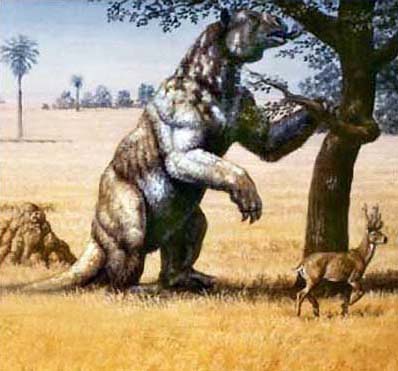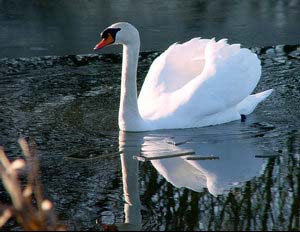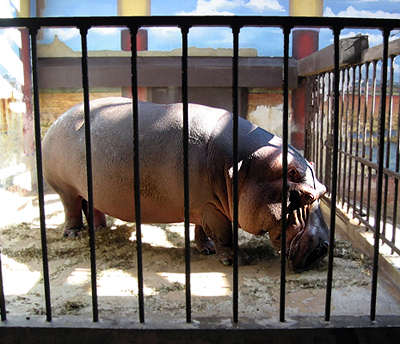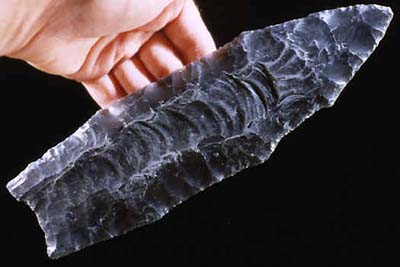Hippos Invade Colombia
By Dan Willmore
Some years back I was teaching English to college students in Canton, China. Most days we worked pretty hard, but every month or so I took the students on a field trip to one of the local landmarks so we could practice speaking in a brighter and more open environment. One spring day we went to the city zoo, a wide compound with a nice variety of creatures. Chinese youth get a rather narrow education, so many of the animals were new to my students, and whenever we stopped by a cage the students asked me something about the animals inside.
"What about the elephants?" they said "Where do elephants come from?"
I told them that the big kind come from Africa, and the little ones from India.
And giraffes?
I said they also come from Africa.
Chimps?
Well, I had to say, chimps come from Africa too.
Lions? Asia has a few lions, but mostly they live in Africa.
Hippos? From Africa.
Zebras? From Africa.
Sable antelopes, and bongos, and warthogs? From Africa.
Finally one of the students said in surprise and frustration, "Most animals come from Africa!"
She was right, of course. In the modern world most large animals live in Africa. In fact, North America no longer has animals larger than half a ton, and neither South America nor Australia have any animals larger than five hundred pounds. Other continents have plenty of small animals, and North America probably has more rodents than any other continent; but only Africa still has a full range of the kind of animals that children expect in coloring books, and which our ancestors ate.

A megatherium, or giant ground sloth, on the plains of South America. Relatives the size of elephants once lived in Florida.
It was not always this way. As recently as ten thousand years ago, the fields and forests of North America were as full of ‘charismatic megafauna’ as Africa is today. Back then, North America had three species of elephants. There were wooly mammoths, which you know from the cave walls, as well as Columbian mammoths, which were less hairy but even bigger, and mastodons. North America also had giant buffalo, as well as beavers as big as bears, and armadillos which were larger than oil barrels. We also had native horses and camels, and even giant sloths, big herbivores which looked like bears and actually weighed more than a lot of elephants do today. South America was equally lucky, as the southern continent had its own amazing range of elephants, including two species of mastodon which lived right on the equator. Furthermore, South America also had giant armadillos and sabertooth tigers and animals so strange it is hard to describe them in print. Sadly, all of these creatures are dead now.
What happened? How did three continents get stripped of their big animals, and how did it happen so quickly? Over the years there have been many theories. During the Victorian age scientists liked to believe that the giant animals -- the 'Mega Beasts' -- had simply become obsolescent, as if fashion had changed and big bodies had stopped being chic. Fortunately, that theory died with the Victorians. In the early twentieth century scientists conjectured that size was simply a way to resist cold, like wearing a thick coat, and the large animals had died when the earth warmed up. Of course, this does not explain why elephants, rhinos, hippos and giraffes do just fine in steamy Africa, and it does not explain why mastodons should have died in the Amazon rain forest, where the weather has not changed even a bit. How could tropical Colombia be so bad for big animals when tropical Congo is clearly so good?
Finally some theoreticians have started talking about the 'mammoth steppe.' These people believe that northern lands like Alaska and Canada used to be too cold for trees to grow. Instead, the scientists believe that the cold winds killed all of the trees when they sprouted, leaving the land open all year, while the sun shone for eighteen or twenty hours a day in the summer. According to the theory, this fertile and sunny ground was perfect for special kinds of heather and legumes to grow -- a sort of super-nutritious 'mammoth steppe' -- which was perfect for elephants to eat. When the Ice Age ended, the story goes, trees grew in the Mammoth Steppe, and the giant buffalo, wild horses, and diverse varieties of elephant could not cope, so they became extinct.
Obviously, I disagree. Whether or not a mammoth could find enough clover in Alaska today seems to be to be an academic argument, because the mammoths died at the same time as a dozen other large species of animals, including horses and camels. Ten thousand years later European settlers brought new species of camels and horses to the North American continent, and those horses and camels have always found enough forage to feed themselves and proliferate; indeed, wild European horses became so common in places like Wyoming that some people think they are native to the region. If wild horses and camels can find enough to eat now, what could have stopped them from doing it back then? By the same token, I cannot believe that the Everglades do not contain enough jungle to feed a giant ground sloth, I do not believe that the Chesapeake Bay does not contain enough marsh weeds to feed giant beaver -- Lord knows it feeds enough nutria -- and I cannot believe that the green hills of Kentucky ever stopped having enough trees to feed mastodons, which specialized in eating trees anyway. It is clear that the other large animals never ran out of food, and since they did not, I do not believe that the mammoths ever did either.
In fact, the theory of the 'Mammoth Steppe' may itself be open to question. For instance, elephants are completely gone from our continent, but they continue to thrive in Africa. Over the last half century game keepers in Kenya watched carefully while a population of three thousand African elephants tore an entire forest out by its roots and let the weeds grow. Some people imagined that the elephants would starve, but instead, the new fields became filled with those 'herbaceous grasses', and the population of elephants expanded from three thousand to thirty thousand, all doing nicely. No one has ever offered a reason why mammoths could not have protected their habitat by doing the same, and indeed, we may be wrong to say that the mammoths disappeared when the 'Mammoth Steppe' disappeared. Instead, the mammoths may have created the Mammoth Steppe in the first place, and trees might have started taking over those plains as soon as the mammoths were no longer present to tear them out. If this is correct, then cause and effect are reversed, and we see that the mammoths were not dependent on the steppe so much as the steppe was dependent on the mammoths.

Pablo Escobar, the Columbian druglord who brought hippos to the New World.
Anyway, this all comes to mind because the nation of Colombia, in South America, is being invaded by another large African mammal, the hippopotamus.
The story is as strange and ironic as any you are likely to hear. It seems that back in the eighties a drug lord named Pablo Escobar grossed a couple of billion dollars shipping cocaine, and he ran out of ways to spend it. Finally he went into the back country and built his own little Xanadu -- a ‘stately pleasure dome’ -- which he rounded out with concrete statues of dinosaurs, and his own private zoo. Escobar stocked his zoo with a wide variety of animals, including two hippos. Most of Colombia is still poor, and a lot of the land has never been settled, so Escobar’s zoo must have impressed his friends and neighbors a great deal, as he intended.
Unfortunately, the cocaine business is as dangerous as any other criminal industry. When Escobar was still smalltime, he could shoot his rivals and pay the police to look the other way, but as he became richer his pride and confidence grew, and in time he decided to run for a seat in the Colombian Senate. This was not a good idea, because the idea of having a ‘Senator Druglord’ offended so many people that no one could ignore him anymore. For a while Escobar tried to intimidate the entire country, setting off bombs outside government buildings and killing people at random, but finally the security forces of Colombia trapped him and shot him into pieces.
Escobar was dead, but his works lived on. Poor squatters took over his estate, living in the houses and planting some of the fields. However, nobody had any use for the hippos, and no one had anything against them, so everyone left the hippos alone. Like passengers on Noah’s Ark, the two hippos escaped and started breeding. Now, ten years later those two hippos have turned into a herd of ten hippos, an increase of four hundred percent, and there is no end in sight. Apparently, the hippos are finding more than enough to eat.

A mute swan. Humans brought the mute swan to the Chesapeake Bay in the nineteen-fifies, and the bird has now become a pest.
How will this all come out? Our own country offers a good comparison. I am sure that most residents of the area will remember how, thirty years ago, somebody imported five mute swans from Europe, and allowed them to escape into the Chesapeake Bay. Those mute swans have also burgeoned with Biblical enthusiasm, so now the Bay has twenty thousand mute swans. In fact, many biologists consider these mute swans to be an ecological disaster, because they suck up acres of water plants, and crowd out native birds the way the famous starling did. The state of Virginia is fairly conservative, and hunting is well respected here, so the law now allows a mute swan season, permitting Virginia's hunters to thin the flock and rescue the ecology. Across the Bay in Maryland, the hunting of mute swans is still controversial, and some people feel that mute swans should be protected altogether. I believe, however, that in time these exotic swans will cause enough trouble for Maryland that hunters in that state will also be allowed to harvest them, and mute swans will become another renewable resource, like white-tail deer and Canada geese.
How does this relate to hippos, in Colombia or anywhere else? I have two children, ages one and four, and the other day I took them to the National Zoo. We went early in the morning, while the keepers were still cleaning out the hippo pool, so the hippos were up in their cages. Rarely have I seen anything so perfect in a zoo. The sunlight was splashing through the skylight, making everything clear, while the hippos themselves were each standing on a raised floor as if they were on display, but eating big gulps of hay and looking supremely happy. My oldest child was fascinated, and he sat on the rail to see them better. Next to the cage I saw a docent, and I asked her about the hippos. She told us hippos grow up slowly and have to carry their babies for more than a year each. However, she also told us that hippos live a long time, and they keep on having babies throughout their lives. Thus, the female hippo at which we were looking was fifty-one years old, and she had already had nineteen offspring. Furthermore, the docent said that the female hippo could expect to live another twenty years or so. Thus, the hippos of Colombia can expect to live naturally for a long time yet, and to leave a lot of descendants.

A hippotamus in the National Zoo in Washington DC.
Will these hippos finally number in the thousands, and become a permanent part of the ecology of Colombia, the way the mute swan and the nutria have become permanent parts of the Chesapeake Bay? Maybe, but it is a long way till then, and the hippos still face three obstacles.
The first problem might be too large to overcome. Every species of plant and animal has to face the danger of inbreeding. Most plants and animals carry at least a few 'bad' genes, genes which code for genetic diseases like dwarfism or hemophilia. If these genes are dominant genes, each victim will express them, and that organism will probably not compete well enough to breed. However, if those 'bad' genes are recessive, then many creatures will have them without suffering any harm. If that creature then breeds with a creature from another blood line, such as a flower from another patch or a rodent from over the hill, then its offspring probably will not have that disease either; and if some of them do, well, flowers and rodents and other small creatures have enough descendents that they can afford to lose a few. However, if the flower or rodent breeds with organisms which have the same recessive gene, then all or most of its descendents might have the same clubfoot or bad pigment, and most of them will not be able to continue their kind. That is why laws keep cousins from marrying, and that is why some biologists feel that a species has become extinct when it has fewer than fifty living members.
Will inbreeding destroy the hippos of Colombia? Obviously, it has not happened to the mute swans. Nonetheless, five mute swans have more than twice as many genes as two hippos, and it might be decades before inbreeding becomes obvious in the hippo colony. Fortunately, the luck that brought one pair of hippos to South America may bring more, and someday a local zoo or some other institution might breed too many hippos, and release a few to freshen the herd.
The second danger might arise from their environment, because hippos have never lived in Colombia before, and they might catch diseases which are new to them. Looking back we can all remember occasions when strange new diseases brought disaster. Most people know that Columbus and other European settlers carried with them as many as two dozen new diseases to the Americas, and most people know that none of the original people of North and South America had any immunity to these infections. In the end, smallpox and measles and other microbes killed more than ninety percent of the Native Americans, and most died before they saw a white face. Did a similar epidemic kill the giant animals of North and South America, and of Australia? Most scientists will concede that the mastodons and other giant animals lived side by side with humans for thousands of years, so they must have had some resistance to human diseases. However, most paleontologists now agree that the New World was populated in waves, and a few scientists have suggested that a final wave of hunter-gatherers brought a new infection with them, something to which the native animals had no resistance. Could rabies or some other mystery illness have exterminated the large animals of three continents?
At first glance this theory seems hard to dismiss, because the catastrophe which struck the Native Americans still weighs heavily on our culture. Nonetheless, the differences seem to be as important as the similarities. The death of the Native Americans happened when hundreds of ships and tens of thousands of people and animals invaded the New World in a single century, bringing dozens of diseases at the same time, an onslaught of infection which nature could never have created by itself. In contrast, the plague that killed everything from the American camel to the giant beaver is imagined to have come from a dozen host species being attacked by a single disease. This does not make sense. Even the numerous plagues that struck the Native Americans did not kill all of them, and the American Indians would have eventually replenished their numbers and reclaimed their habitat, if that habitat had not already been stolen by their European and African cousins. No single disease could have erased so many kinds of animals across three continents, and it is hard to imagine how a group of diseases could have crossed the Bering Strait at the same time, because their numbers were always small, and they did not bring any kind of animal with them except the dog.
Of course, the Americas were not completely free of diseases, even at the time of Columbus, and the invaders did find syphilis, which European civilization then spread to every corner of the world. By the same token, the hippos might encounter a new illness for which they have no immunity. However, Africa has already had large quantities of livestock imported from other continents, and these domestic animals should have brought over whatever diseases are endemic to our side of the world. Therefore, it would seem to me that the hippo species should already be resistant to whatever microbes exist in the New World. After all, the mute swans in the Chesapeake do not seem to be having any problem with local diseases.
The final danger to the hippos should be obvious. If the large animals of the Americas and Australia were not killed by climate changes or by disease, they must have been killed by something else. What could it have been? What new thing spread over those three continents, inflicting cataclysmic change in a dozen different ecosystems? Having thought about this for years, and having considered all of the theories, I am confident that only one force could have destroyed so many species so quickly, and that force is the same species that exterminated the Arizona jaguar and the great auk. The source of the great death is reading this essay right now.

A Clovis point. Big and sharp, the new weapons allowed the invaders to kill even the largest animals.
Let's go back over the history. Near the end of the Ice Age a new wave of people came into the North and South American continents, joining the people who were already here. These new people crossed the Bering Strait, probably while it was still covered with ice. We do not know what new diseases they brought, if any, but we know a lot about their weapons. This final wave of Asiatic settlers had something we call a Clovis point -- a new form of flint spear which was perfect for killing elephants and other large animals. We know that these weapons did kill many large animals, including mammoths, because scientists have found Clovis points buried among their rib bones. The large animals could and should have run away, like the animals of Africa do; but the animals of Africa had spent millions of years living around Australopithecus and other early hominids, so that by the time people in Africa had Clovis points, the elephants and hippos knew how to deal with them. Unfortunately, the animals of North and South America, and the animals of Australia, were taken completely by surprise. Scientists in Australia now believe that the large animals Down Under were exterminated within three hundred years of the arrival of human beings. Some of these animals were killed for food and clothing, but there are gullies in the American West which are stacked forty feet deep with the bones of ancient buffalo, and across other continents scientists have found the marks where entire forests were burnt, and hundreds of mammoths were slaughtered at a single time, almost certainly for fun. Nothing short of a falling asteroid has ever done so much harm so quickly.
Have we changed that much? Have we changed, enough? Across the seas, drift lines sixty miles long have killed ninety percent of the largest fish, just in the last half century, while in our own country, birds like the passenger pigeon and the California condor were shot to the brink of extinction – or beyond – just for fun. There is something in the human heart that goes beyond cruelty to the level of true madness, like the madness of a weasel which kills every chicken in the coop, not because it must, but because it can; and that is one of the reasons that the hippos of Colombia matter to me. Letting them survive will allow the New World to regain the kind of big wild animals that we lost ten thousand years ago, but at the same time it will allow us to pass a kind of test. Can we -- as a species -- do better this time? Today the people of Colombia are tolerating their new neighbors well, but they might not always do so, and in the future some adventurous young man might decide to leave a mark on the world, and then walk down to the lake with a machine gun. Hippos are big and easy targets, and it would not take long to exterminate them, no matter how many there are. If somebody does decide to kill the hippos -- or even just ‘send them back to Africa’ -- then the ecology of Colombia will be more "purely native," but the world will be a smaller place.
Copyright 2003 Dan Willmore